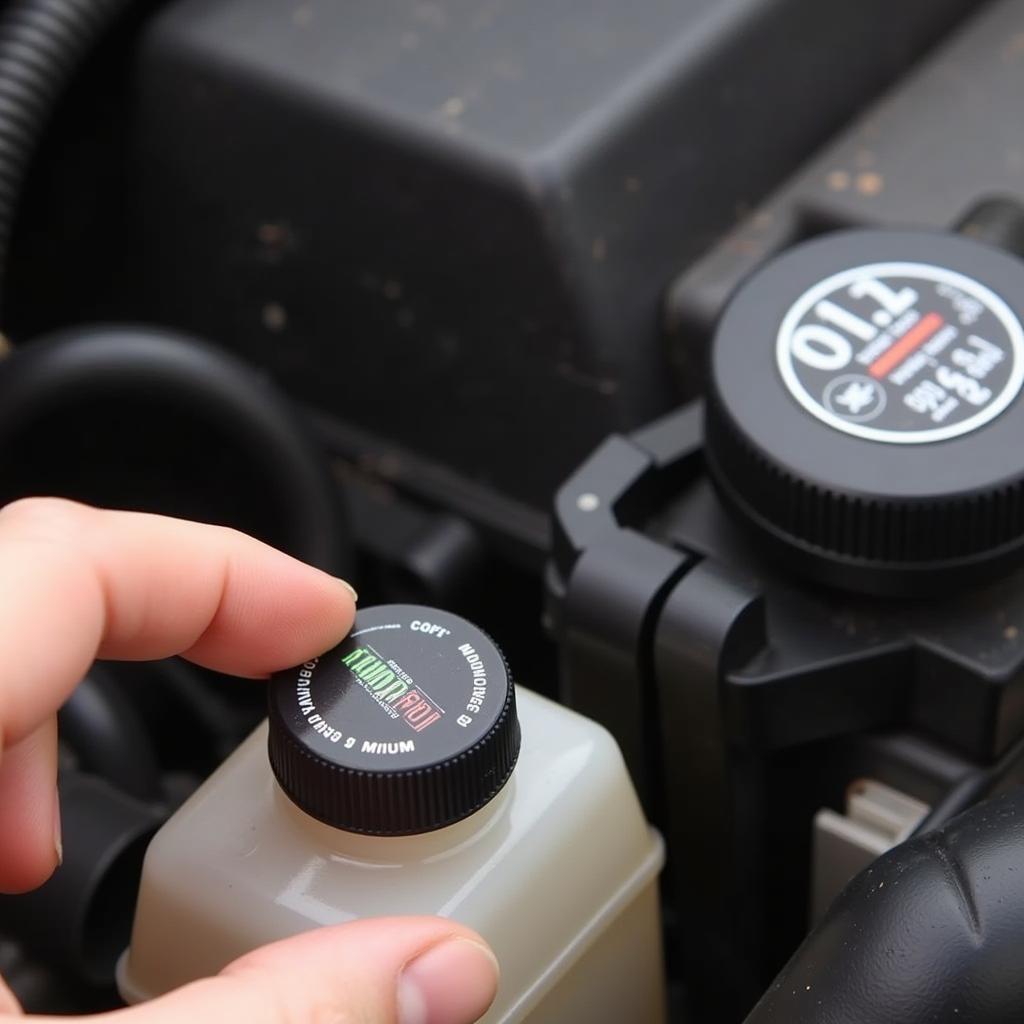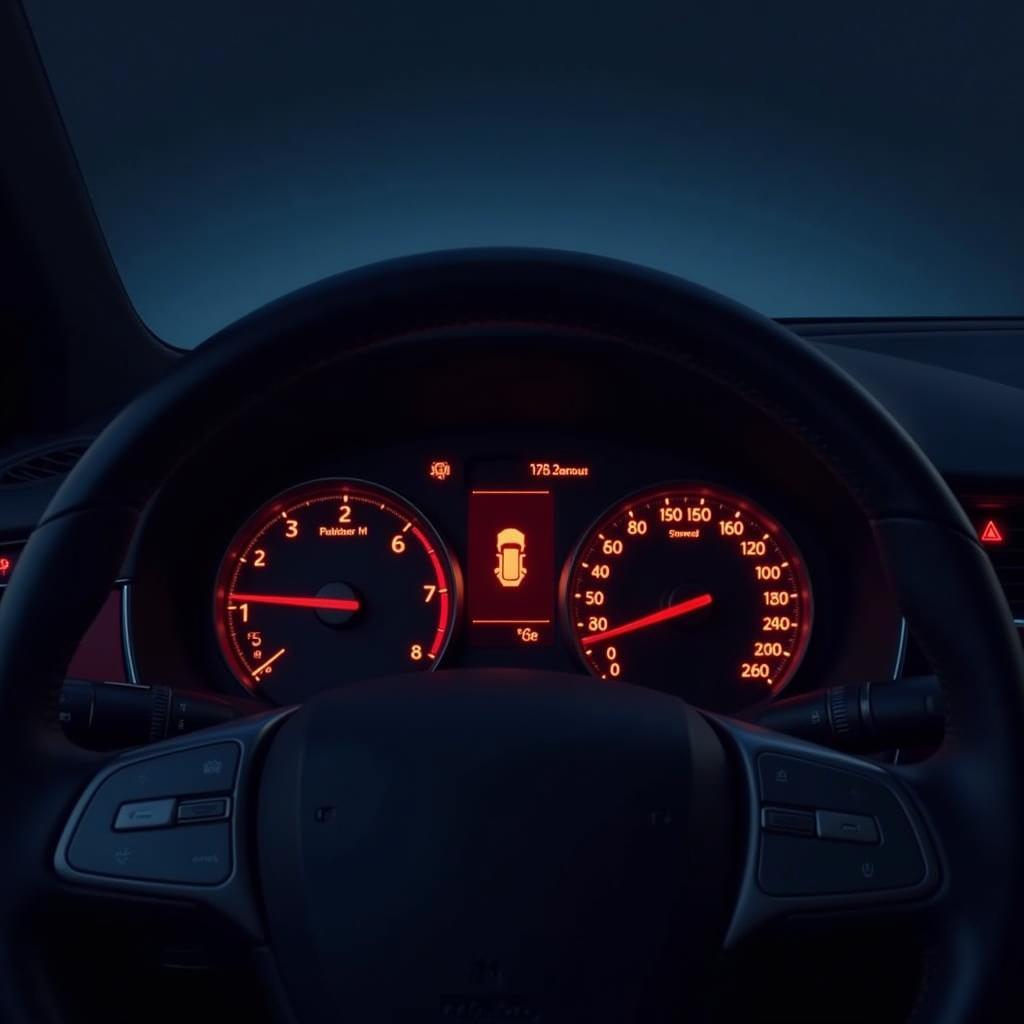The brake fluid warning lamp illuminating on your dashboard is a serious issue that should never be ignored. This light signals a problem with your vehicle’s braking system, which could significantly impact your safety on the road. As experts in automotive electrical engineering, specializing in remote diagnostics, programming, and software installation, we’re here to help you understand why this warning lamp might be on and guide you towards a solution.
Understanding Your Vehicle’s Braking System
Before diving into the causes of a lit brake fluid warning lamp, it’s crucial to grasp the basics of how your car’s braking system operates. At its core, the system relies on hydraulic pressure to slow down or stop your vehicle. When you press the brake pedal, you’re essentially activating a piston in the master cylinder, which pushes brake fluid through hydraulic lines to the brakes at each wheel. This pressurized fluid then activates the calipers or wheel cylinders, forcing the brake pads or shoes to clamp down on the rotors or drums, generating the friction needed to stop your vehicle.
 Car Brake System Components Diagram
Car Brake System Components Diagram
Common Causes of a Brake Fluid Warning Lamp
Now, let’s explore the common culprits behind a glowing brake fluid warning lamp:
-
Low Brake Fluid Level: This is the most frequent reason for the warning lamp to turn on. Brake fluid levels naturally decrease as brake pads wear down. However, a sudden drop in fluid level often points to a leak in the braking system.
-
Worn Brake Pads: As mentioned earlier, brake pads wear down over time. When they become too thin, the brake caliper pistons need to extend further to engage the rotors, requiring more brake fluid and potentially triggering the warning lamp.
-
Brake Fluid Leak: A leak anywhere in the brake system, be it the master cylinder, brake lines, hoses, or calipers, can lead to a loss of hydraulic pressure and trigger the warning light.
-
Faulty Brake Light Switch: In some vehicles, the brake light switch is integrated with the brake fluid level sensor. A malfunctioning switch can illuminate the warning lamp even if the brake fluid level is sufficient.
-
Problem with the ABS System: While less common, issues with the Anti-lock Braking System (ABS), like a faulty ABS module or sensor, can sometimes activate the brake fluid warning lamp.
What to Do When Your Brake Fluid Warning Lamp Turns On
The illumination of your brake fluid warning lamp necessitates immediate attention. Do not continue driving. Here’s what you should do:
-
Safely park your vehicle: Find a safe location to pull over as soon as possible.
-
Check your brake fluid level: Locate the brake fluid reservoir under the hood (refer to your owner’s manual if unsure). Inspect the fluid level, noting its position relative to the “Min” and “Max” markings.
-
Add brake fluid (if necessary and only if you feel safe): If the fluid level is low, carefully add the correct type of brake fluid (DOT 3 or DOT 4, as specified in your owner’s manual) until it reaches the “Max” line.
 A person checking the brake fluid level in a car
A person checking the brake fluid level in a car
- Inspect for leaks: Look for any signs of brake fluid leaks around the master cylinder, brake lines, and near the wheels. Leaks often appear as wet spots or puddles of a clear or yellowish fluid.
Remember, adding brake fluid is a temporary solution if a leak exists. It’s crucial to have your vehicle towed to a trusted mechanic or service center for a thorough inspection and repair.
Remote Diagnostics and Solutions
In today’s technologically advanced world, remote diagnostics play an increasingly vital role in identifying and resolving automotive issues, including brake system problems. Our team of expert technicians can remotely access your vehicle’s computer system, analyze error codes, and run diagnostics to pinpoint the root cause of the illuminated brake fluid warning lamp. In some cases, we can even offer software solutions or programming updates remotely, saving you time and potentially reducing repair costs.
2013 audi a6 brake warning light
Preventing Future Brake Fluid Warning Lamp Issues
Taking preventative measures can go a long way in avoiding brake fluid warning lamp surprises. Consider these tips:
- Regular Brake Inspections: Have your brakes inspected by a qualified mechanic at least once a year or as recommended in your owner’s manual.
- Timely Brake Pad Replacement: Don’t wait until your brake pads are completely worn down. Replace them at the recommended intervals to maintain optimal braking performance.
- Brake Fluid Flush: Brake fluid absorbs moisture over time, reducing its effectiveness. Have your brake fluid flushed and replaced every 2-3 years or as advised by your mechanic.
- Be Attentive to Changes: Pay attention to any changes in your brake pedal feel, unusual noises when braking, or the illumination of warning lamps on your dashboard.
Expert Insight
“Many car owners underestimate the importance of regular brake system maintenance. Ignoring early signs of brake problems, like a lit brake fluid warning lamp, can lead to more serious and costly repairs down the road,” says Mark Williams, Senior Automotive Technician at CARDIAGTECH.
2002 bmw x5 brake warning light reset
Conclusion
A glowing brake fluid warning lamp demands immediate attention. While it could indicate something as simple as low brake fluid, it could also signal a more serious issue within your vehicle’s braking system. By understanding the common causes, taking appropriate action when the lamp illuminates, and embracing preventative maintenance practices, you can ensure the safety and reliability of your vehicle’s braking system, keeping you safe on the road. If you’re ever unsure about diagnosing or addressing a brake fluid warning lamp issue, don’t hesitate to contact our team of remote diagnostics experts for assistance.


